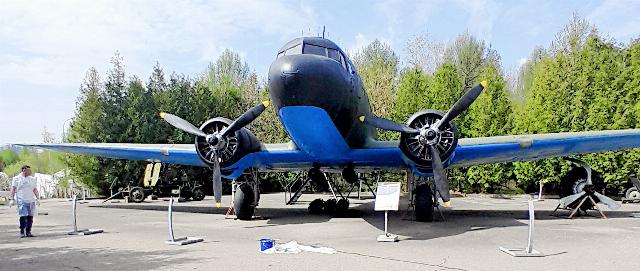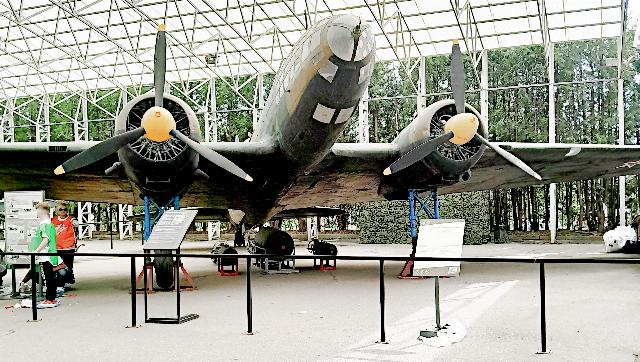On April 19, on Poklonnaya Gora, on the territory of the museum "Main Weapons Relics of the Army" ("G.O.R.A."), a large-scale environmental clean-up "Green Spring - 2025" took place. Olga Plyamina, General Director of the Vernadsky Foundation, addressed the participants with a welcoming speech. She noted that the event had become a good tradition, and the place was not chosen by chance.
- This year is special for all of us. The year of the 80th anniversary of the Great Victory. Five years ago, we already held a clean-up here. And in the Hall of Fame of the Victory Museum, a time capsule with messages from 9 million people – citizens of Russia, Belarus, Kazakhstan and Uzbekistan – was handed over for 25-year storage. And I hope that today's event will be another of our common contributions to the nature of the future and to the memory of the past, she said.
The event brought together hundreds of eco-activists, including representatives of government agencies, businesses, including Russian Railways, Rosatom, Cherkizovo, NGOs, educational institutions, as well as schoolchildren and students.
In memory of the heroes of the Great Patriotic War, participants laid flowers at the Monument to the "Military Sailors who died in the Battle of Moscow in 1941-1942." Volunteers cleaned and painted the park, and the Foundation organized workshops, relay races and environmental quizzes for young guests.
The Victory Museum is Russia's main military history museum dedicated to the Great Patriotic War and World War II, one of the largest military history museums in the world, and an all—Russian research, cultural and educational center.
Today, the museum is one of the leading institutions for countering attempts to falsify history, as well as a center for patriotic education of new generations.
The interactive Museum of Historical military equipment is located in the open air in Victory Park, at the intersection of Memory Alleys and Gunners. The exhibition features hundreds of pieces of military equipment and weapons, many of which are rare, including tanks, fighter jets, and passenger cars. In addition, the exhibition is complemented by virtual special effects and decorations that create an atmosphere of the era.
In the memorial park, not far from the main building of the Victory Museum, there is its branch museum "The Main weapons relics of the Army" ("G.O.R.A."). The museum began its work on May 5, 2022 on the basis of outdoor exhibitions.
Almost in the very center of Moscow, a unique collection of military equipment and weapons is located on the territory of 10 hectares. 10 locations are waiting for guests, which contain more than 400 rare exhibits — many of them exist in a single copy. The authentic relics are grouped thematically and a corresponding historical setting has been created for them. In addition, the museum space is complemented by interactive expositions and mock-ups of equipment, special effects and sculptural figures of participants in the events.
The locations "Tank", "Aviation", "Artillery" tell about the equipment of the respective branches of the armed forces. Not only the rarest exhibits are presented here — prototypes or machines that have survived to our time in a single copy, but also interactive models with moving parts, as well as mock-ups demonstrating the device of technology. Rare wartime aircraft are on display there, including the Li-2 transport aircraft and the Il-4 bomber.
 |
| Li-2 transport aircraft. The museum "The main weapons relics of the army" ("G.O.R.A."). |
| Source: Valery Ageev |
 |
| The Il-4 bomber. The museum "The main weapons relics of the army" ("G.O.R.A."). |
| Source: Valery Ageev |
The latter was created before the war, but with the beginning of the Great Patriotic War, it was hastily modified, since not all aircraft were equipped with their own weapons — a firing point. The IL-4 was very difficult to control, but it could lift up to 2.5 tons of shells into the air.
After the data was declassified in 1996, it became known that 42 pilots were awarded the title Hero of the Soviet Union and four more were awarded the title Hero of Russia for their exploits in the fight against the Nazi army on the Il-4. The exhibition also includes mock-ups of tankers, German equipment, Allied aircraft and air defense devices.
The pride of the exposition is the Tsar Cannon of the XX century, a giant 305—millimeter TM-3-12 marine railway installation weighing more than 340 tons. It was built at the Nikolaev plant in three copies. A large-caliber anti-aircraft gun from the sunken battleship Empress Maria was installed on the railway platform.
 |
| Large-caliber anti-aircraft gun from the sunken battleship Empress Maria. |
| Source: Valery Ageev |
At the beginning of the Great Patriotic War, the system participated in the defense of the Hanko naval base in modern Finland. There, the retreating Soviet troops blew it up, but the Finnish military restored it and handed over the cannon to the Red Army after the end of the war. The anti-aircraft gun was in service until 1961.
"Green Spring" is not just about cleaning territories, but a real ecological holiday that unites people of different ages and professions in an effort to make our country cleaner.
Valery Ageev

